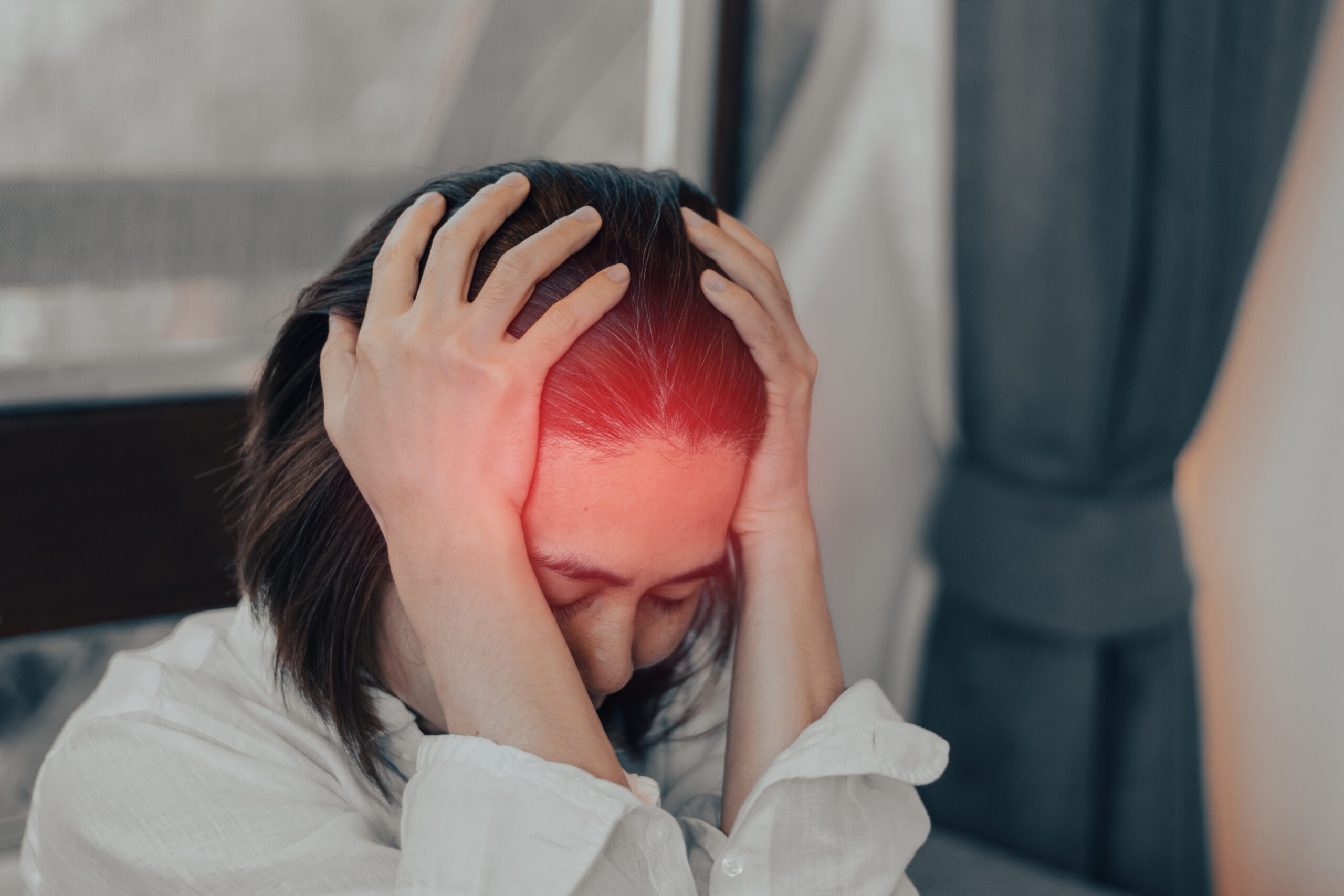
Migraines are a neurological condition that are typically characterized by occurrences of moderate to severe pain. They are often described as a throbbing or pulsating sensation on one side of the head. However, they can also manifest as pain in the eyes, temples, face, jaw, or neck. Understanding migraines requires knowledge of their causes, triggers, and symptoms.
The precise cause of migraines is still unknown, but research suggests it results from a mix of genetic, neurological, environmental, and lifestyle influences. Studies show that genetics play a role, as the majority of people who experience migraines have a family history of the condition. From a neurological standpoint, migraines are thought to stem from abnormal brain activity that results in pain signals being sent to your brain.
Migraine triggers can vary between individuals. Some of the most common triggers include:
- Environmental Stimuli such as:
- Bright or flashing lights
- Loud sounds
- Strong odours like perfume, smoke, and chemicals
- Weather changes, particularly shifts in barometric pressure.
- Poor air quality
To note, sensory overload is a common trigger for many individuals.
- Dietary Factors: Certain diets can provoke migraines in those who are susceptible. Common dietary triggers include:
- Alcohol
- Caffeine, whether from excessive intake or withdrawal
- Aged cheeses
- Food additives like nitrates or monosodium glutamate (MSG)
- Artificial sweeteners, such as aspartame
- Skipping meals, fasting, or becoming dehydrated can also lead to migraines.
- Stress: Individuals experiencing emotional stress and its associated muscle tension, especially in the neck and shoulders, have a higher risk of migraines.
- Physical Factors such as:
- Intense physical exertion
- Physical strain
- Poor posture
- Head trauma
- Sleep: Individuals who have irregular sleep patterns, including both insufficient sleep and oversleeping, are more prone to migraines. Additionally, people with sleep disorders such as sleep apnea are at a higher risk of migraines.
- Hormonal Changes: Women who experience hormonal fluctuations, particularly in estrogen levels, during menstruation, pregnancy, and menopause, are more prone to migraines.
Symptoms:
There are typically four stages of a migraine attack, though not everyone experiences all stages.
- Premonitory/Predrome: This phase can start up to 24 hours before developing a migraine. Symptoms include food cravings, fatigue, mood changes, food cravings, neck stiffness, increased thirst, and frequent yawning.
- Aura: The Aura phase includes common visual disturbances such as flashes of light, blind spots, or zigzag patterns. People can also experience muscle weakness and changes in sensation and speech during this phase.
- Headache: This phase is characterized by moderate to severe, throbbing pain on one side of the head, but it can affect both sides. Other symptoms include nausea, vomiting, sleep disorder, motion sensitivity leading to dizziness, neck pain and stiffness, and sensitivity to light, sound, smell, and touch. The headache phase can last from several hours to up to three days.
- Post-drome: This phase occurs after the headache subsides. In this phase individuals may feel drained, exhausted, or confused. Additional symptoms can include difficulty concentrating, moodiness, dizziness, and weakness. These symptoms can last up to a day.
Overall, the cause of migraines is complex, but identifying common triggers and symptoms can help both individuals experiencing migraines and healthcare professionals develop more effective strategies to alleviate the condition’s effects.
Written by: Alexis Georgakopoulos, Registered Occupational Therapist
References:
American Migraine Foundation. (n.d.). What Causes Migraine? Retrieved from https://americanmigrainefoundation.org/resource-library/what-causes-migraine/
American Migraine Foundation. (October 21, 2021). How Long Does A Migraine Attack Last? Retrieved from https://americanmigrainefoundation.org/resource-library/how-long-does-a-migraine-attack-last/#:~:text=The%20headache%20portion%20of%20an,though%20this%20is%20not%20typical.
Cleveland Clinic. (n.d.). Migraine Triggers. Retrieved from https://my.clevelandclinic.org/health/diseases/5005-migraine-headache
Harvard Health Publishing. (n.d.). Migraines: Simple Steps to Head Off the Pain. Retrieved from https://www.health.harvard.edu/headache/migraines-simple-steps-to-head-off-the-pain
Healthline. (n.d.). Understanding Migraine Triggers and Risk Factors. Retrieved from https://www.healthline.com/health/migraine/triggers
Johns Hopkins Medicine. (n.d.). Migraine Headache. Retrieved from https://www.hopkinsmedicine.org/health/conditions-and-diseases/migraine-headache
Mayo Clinic. (n.d.). Migraine. Retrieved from https://www.mayoclinic.org/diseases-conditions/migraine-headache/symptoms-causes/syc-20360201
Migraine Research Foundation. (n.d.). Migraine and Women. Retrieved from https://migraineresearchfoundation.org/about-migraine/migraine-and-women/
Migraine Trust. (n.d.). Migraine with Aura. Retrieved from https://www.migrainetrust.org/about-migraine/types-of-migraine/migraine-with-aura/
National Institute of Neurological Disorders and Stroke. (n.d.). Migraine Information Page. Retrieved from https://www.ninds.nih.gov/Disorders/All-Disorders/Migraine-Information-Page
National Sleep Foundation. (n.d.). Sleep and Migraine. Retrieved from https://www.sleepfoundation.org/sleep-disorders-problems/sleep-and-migraine
NHS. (n.d.). Migraine. Retrieved from https://www.nhs.uk/conditions/migraine/
WebMD. (n.d.). Migraines: Triggers and Risk Factors. Retrieved from https://www.webmd.com/migraines-headaches/guide/migraines-headaches-triggers-and-risk-factors

